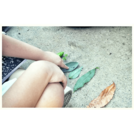
Students will observe, measure, sort, and examine (shapes and textures)of leaves individually, in groups, and in relationship to the entire plant.
- Subject:
- Life Science
- Material Type:
- Lesson Plan
- Author:
- Out Teach
- Date Added:
- 07/22/2021

Students will observe, measure, sort, and examine (shapes and textures)of leaves individually, in groups, and in relationship to the entire plant.
Take a breath — where does the oxygen you inhaled come from? In our changing world, will we always have enough oxygen? What is in water that supports life? What is known? How do we know what we know about our vast oceans? These are just a few of the driving questions explored in this interactive STEAM high school curriculum module.
Students in marine science, environmental science, physics, chemistry, biology, integrated science, biotechnology and/or STEAM courses can use this curriculum module in order to use real-world, big data to investigate how our “invisible forest” influences ocean and Earth systems. Students build an art project to represent their new understanding and share this with the broader community.
This 4-week set of lessons is based on the oceanographic research of Dr. Anne Thompson of Portland State University in Oregon, which focuses on the abundant ocean phytoplankton Prochlorococcus. These interdisciplinary STEAM lessons were inspired by Dr. Thompson’s lab and fieldwork as well as many beautiful visualizations of Prochlorococcus, the ocean, and Earth. Students learn about the impact and importance of Prochlorococcus as the smallest and most abundant photosynthetic organism on our planet. Through the lessons, students act as both scientists and artists as they explore where breathable oxygen comes from and consider how to communicate the importance of tiny cells to human survival.
This module is written as a phenomenon-based, Next Generation Science Standards (NGSS) three-dimensional learning unit. Each of the lessons below also has an integrated, optional Project-Based Learning component that guides students as they complete the PBL process. Students learn to model a system and also design and evaluate questions to investigate phenomena. Students ultimately learn what is in a drop of ocean water and showcase how their drop contributes to our health and the stability and dynamics of global systems.

In this lesson, the students will be given time to create their own understandings about the parts of plants as they explore plants hands-on in the outdoor classroom.

Students can research a particular plant on particular aspects like where does it thrive, how big does it get, etc.
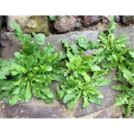
STUDENT ACTIVITY -- 3rd -- NCThis is a distance-learning lesson students can complete at home.Students will pull weeds to explore plant structures that promote survival.This activity was created by Out Teach (out-teach.org), a nonprofit providing outdoor experiential learning to transform Science education for students in under-served communities. .
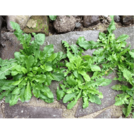
In this lesson, students will explain their observations and understanding of various plant's external parts and how they help the plant survive in its environment.
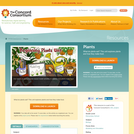
What do plants eat? This unit explores plants and how they make food.
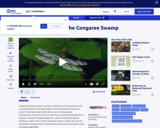
In this video segment from NatureScene, observe dragonflies and mayflies near Cedar Creek at Congaree Swamp National Park.
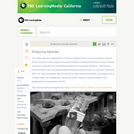
In this video segment adapted from A Science Odyssey, follow two scientists and their Nobel Prize-winning efforts to cure bacterial infections using penicillin.
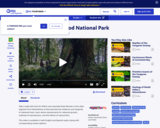
This video segment from NatureScene describes the characteristics of redwood trees at Redwood National Park.
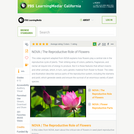
In this video segment adapted from NOVA, learn about the critical role of flowers in seed plant reproductive biology.
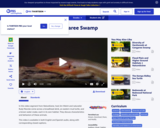
In this video segment from NatureScene, discover some reptiles in the swamp forest ecosystem at Congaree Swamp National Park.
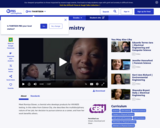
In this video from Science City, meet Romiya Glover, a chemist who develops products for HIV/AIDS testing. She describes the multidisciplinary nature of her job, how she decided to go into science, and how her work benefits others.

Learn about root systems of trees in the Congaree Swamp National Park in this video segment from NatureScene.

In this lesson, based on the documentary Through My Eyes: The Charlie Kelman Story, students learn about the history and state-of-the-art of one of the world's most commonly performed surgical procedures--eye cataract removal and replacement.
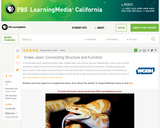
In this lesson designed to enhance literacy skills, students learn how animals' physical characteristics, such as jaw structure, are directly related to the function they perform when the animal interacts with its environment.
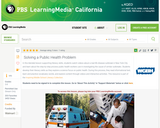
In this lesson designed to enhance literacy skills, students study a disease outbreak and the investigation that followed to understand the role that public health workers play in protecting the communities they serve.

Why do teenagers act the way they do? This video segment from FRONTLINE: Inside the Teenage Brain explores the work scientists are doing to explain some of the mysteries of teenage behavior.

STUDENT ACTIVITY - 3rd - GA/TXThis is a distance-learning lesson students can complete at home.Students will explore the outdoors for examples of different plant structures and determine how plants use these structures to meet their needs.This activity was created by Out Teach (out-teach.org), a nonprofit providing outdoor experiential learning to transform Science education for students in under-served communities.

Students will explore the garden/outdoor classroom for examples of different plant structures and determine how plants use these structures to meet their needs.